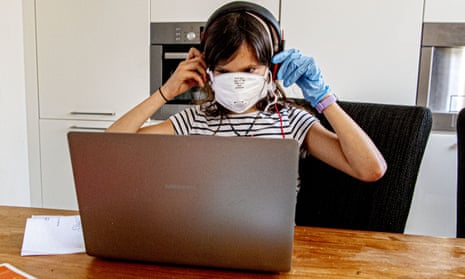Should we start to use “physical distancing” instead of “social distancing”? Those keen on the change argue that, despite being physically apart, we can still be socially together. So we can connect and support each other even when avoiding unnecessary face-to-face contact.
Sure, change the label. But it won’t change the reality of what might well be a long period of curtailed social interaction with anyone outside our own home, a reality that’s especially significant for children and young people.
Social contact and stimulation shape our lives from the very start. By the time they’re a few months old, infants start engaging with the social world around them, participating first in the simplest of interactions through gestures and facial expressions. From then on our lives are governed by our surroundings: they determine how we learn, develop and feel.
Harrowing animal research studied by undergraduate psychology students around the world illustrates how the deprivation of social contact in childhood and adolescence can have negative effects on development that extend long into adulthood.
So how concerned should we be about the current lockdown and how it might be affecting children and adolescents? First, it’s important to recognise that most of them will not be spending lockdown deprived of all social contact, as in the animal studies, but in close interaction with their family. What they are specifically locked away from is social contact with their peers.
The importance of peer contact changes across development. Infants and children mainly depend on attention given by parents or caretakers, with the importance of peer contact growing from that point onwards, probably reaching its maximum importance in adolescence. At this age, you are focused on your peers. In turn, peer approval becomes especially influential in shaping decisions and behaviour, as adolescents start probing their place in a maturing social world.
While there is so far only minimal research on the lockdown, one could easily hypothesise that adolescents might suffer especially. The evidence that we do have – colleagues and I are currently immersed in research on the theme – seems to point in that direction. While a study of 60,000 people in lockdown by University College London did not survey under-18s, it found that the youngest in the sample (18- to 24-year-olds) were suffering most, showing the highest levels of loneliness and feeling down, while those over 60 were showing the highest levels of life satisfaction. Anecdotal evidence from parents reinforces the view that it is often teenagers most struggling with being apart from their friends. And we know that most mental health problems first appear during adolescence.
And yet, on the upside, we are also living in a time when society is more digitally connected than ever. Technologies such as social media, video call applications, group chats or social video games offer contact without us having to be in physical proximity.
At least some of the positive consequences of face-to-face social interaction can be mimicked through digital means. Digital interactions can make us feel less socially excluded and aspects of socialising via technologies have been shown to activate reward systems in our brain.
With contact being so important to adolescents, it’s therefore unsurprising that over the last decades they have often been among the first widespread users of these social technologies. And now, the potential of these digital innovations to mitigate some of the negative consequences of children and adolescents separated from their friends should not be underestimated.
Many parents are worried, of course, about how their children’s screen time is going through the roof during this crisis. But now more than ever we need to stop considering as a valuable metric the simple time spent on screens. Screens are not drugs that have definite impacts on brain and behaviour; indeed, high-quality evidence that screens themselves do widespread harm is almost non-existent.
We should instead focus on what activities are engaged in via these screens. It’s the nature of the activities that screens help mediate that determines how we are affected by their use. When we’re sitting across from someone staring at a digital screen for long periods of time, the diversity of activities they they’re engaged in is often not apparent. So we might judge the use uniform and monotonous.
So I encourage parents to worry less about time spent by their children on screens and instead focus on what they’re doing with them. Activities such as video calling friends, exchanges via social media or playing Fortnite with friends online will all help keep children and teenagers connected throughout the lockdown.
Yet this also puts a spotlight on the digital divide that still affects Britain today, with children in disadvantaged households – without their own personal technological equipment or a high-speed internet connection – experiencing an additional setback, another expression of our inequalities. In the circumstances, our youngest have never been more in need of digitised connection.
